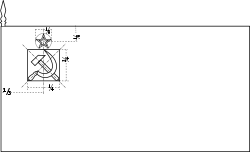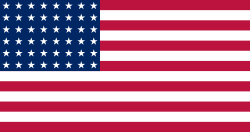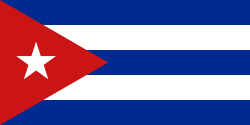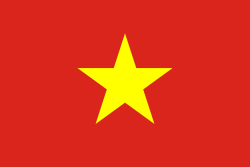Imre Földi
| Imre Földi | |
|---|---|
 Imre Földi na LOH 1964 | |
| Narození | 8. května 1938 Kecskemét |
| Úmrtí | 23. dubna 2017 (ve věku 78 let) Tatabánya |
| Místo pohřbení | Tatabánya |
| Povolání | vzpěrač a trenér |
| Děti | Csilla Földi |
| Některá data mohou pocházet z datové položky. | |
| Přehled medailí | ||
|---|---|---|
| stříbro | LOH 1964 | bantamová váha |
| stříbro | LOH 1968 | bantamová váha |
| zlato | LOH 1972 | bantamová váha |
| Mistrovství světa ve vzpírání | ||
| zlato | MS 1965 | bantamová váha |
| zlato | MS 1972 | bantamová váha |
| stříbro | MS 1961 | bantamová váha |
| stříbro | MS 1962 | bantamová váha |
| stříbro | MS 1964 | bantamová váha |
| stříbro | MS 1966 | bantamová váha |
| stříbro | MS 1968 | bantamová váha |
| stříbro | MS 1970 | bantamová váha |
| bronz | MS 1959 | bantamová váha |
Imre Földi (8. května 1938 Kecskemét – 23. dubna 2017 Tatabánya) byl maďarský vzpěrač, startující ve váze do 56 kg.
Pracoval jako důlní zámečník, byl členem klubu Tatabányai Bányász. Byl prvním vzpěračem, který se zúčastnil pěti olympijských her. Získal stříbrnou medaili v roce 1964 a 1968 (měl stejný výkon jako vítězný Íránec Mohammad Nassiri a o titulu rozhodla soupeřova nižší tělesná váha), vyhrál v roce 1972. Také zvítězil ve trojboji na mistrovství světa ve vzpírání 1965 a pětkrát se stal mistrem Evropy: 1962, 1963, 1968, 1970 a 1971. Během kariéry vytvořil dvacet světových rekordů.
Působil také jako trenér, mezi jeho svěřence patřila i jeho dcera Csilla Földiová, která se stala mistryní Evropy. Za své úspěchy obdržel Maďarský záslužný kříž a byl jmenován do Síně slávy světového vzpírání. Je také jednou ze dvanácti legend maďarského sportu, které obdržely titul A Nemzet Sportolója. V roce 2009 po něm byla v Tatabányi pojmenována městská sportovní hala.
Externí odkazy
 Obrázky, zvuky či videa k tématu Imre Földi na Wikimedia Commons
Obrázky, zvuky či videa k tématu Imre Földi na Wikimedia Commons - Imre Földi v databázi Olympedia (anglicky)
- http://www.chidlovski.net/liftup/l_galleryResult.asp?a_id=64
- http://www.muscle-fitness.cz/index.php?option=com_content&view=article&id=12485:klasicky-vzperac-imre-foeldi&catid=796:januar-2015&Itemid=175&lang=cz
Média použitá na této stránce
Olympic Rings without "rims" (gaps between the rings), As used, eg. in the logos of the 2008 and 2016 Olympics. The colour scheme applied here was specified in 2023 guidelines.
Olympic Rings without "rims" (gaps between the rings), As used, eg. in the logos of the 2008 and 2016 Olympics. The colour scheme applied here was specified in 2023 guidelines.
US Flag with 48 stars. In use for 47 years from July 4, 1912, to July 3, 1959.
(c) I, Cmapm, CC BY-SA 3.0
The flag of the Soviet Union (1955-1991) using a darker shade of red.

(c) I, Cmapm, CC BY-SA 3.0
The flag of the Soviet Union (1955-1991) using a darker shade of red.

Autor: Scroch, Licence: CC BY-SA 3.0
Flag of Bulgaria (1971-1990). Flag of Bulgaria with Bulgarian coat from 1971.
Flag of Iran. The tricolor flag was introduced in 1906, but after the Islamic Revolution of 1979 the Arabic words 'Allahu akbar' ('God is great'), written in the Kufic script of the Qur'an and repeated 22 times, were added to the red and green strips where they border the white central strip and in the middle is the emblem of Iran (which is a stylized Persian alphabet of the Arabic word Allah ("God")).
The official ISIRI standard (translation at FotW) gives two slightly different methods of construction for the flag: a compass-and-straightedge construction used for File:Flag of Iran (official).svg, and a "simplified" construction sheet with rational numbers used for this file.
Chinese Taipei Olympic Flag. According to the official website of Chinese Taipei Olympic Committee, Blue Sky(circle) & White Sun(triangles) above the Olympic rings is neither the National Emblem of the Republic of China, nor the Party Emblem of Kuomintang (KMT), but a design in between, where the triangles do not extend to the edge of the blue circle, as registered at International Olympic Committee in 1981 and digitally rendered in 2013. Besides, the blue outline of the five-petaled plum blossom is broader than the red one. Moreover, the CMYK code of the blue one and the Blue Sky & White Sun is "C100-M100-Y0-K0", and different from the Olympic rings (C100-M25-Y0-K0). Note that it's the only version recognized by IOC.
bendera Indonesia
Flag of South Korea from 21 February 1984 to 15 October 1997, when the exact colors were specified into their shades.
Autor: Scroch, Licence: CC BY-SA 3.0
Flag of Bulgaria (1971-1990). Flag of Bulgaria with Bulgarian coat from 1971.
this is the flag of the Soviet Union in 1936. It was later replaced by File:Flag of the Soviet Union (1955-1980).svg.
Imre Földi at the 1964 Olympics






















